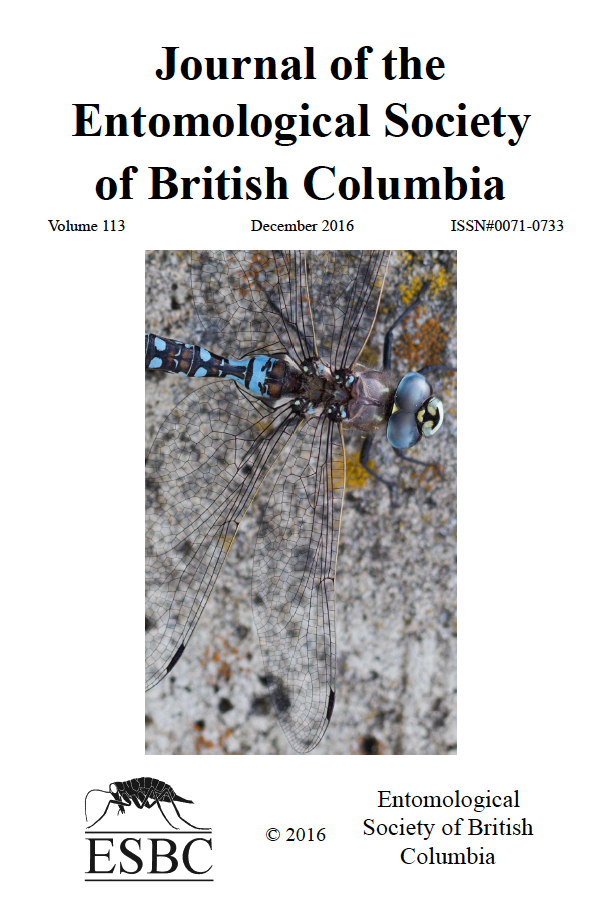Relative Efficacies of Sticky Yellow Rectangles Against Three Rhagoletis Fly Species (Diptera: Tephritidae) in Washington State
Keywords:
, Rhagoletis indifferens, Rhagoletis pomonella, Rhagoletis completa, yellow plastic traps, yellow cardboard traps, Tanglefoot® adhesiveAbstract
Sticky yellow rectangle traps are used to monitor various pest Rhagoletis flies (Diptera: Tephritidae), but it is unclear if relative efficacies of these traps differ with fly species. Here, the major objective was to identify the most efficacious of five commercial sticky yellow rectangles baited with ammonium carbonate against western cherry fruit fly, R. indifferens Curran, apple maggot fly, R. pomonella (Walsh), and walnut husk fly, R. completa Cresson, in Washington state, U.S.A. Two plastic yellow sticky strips (YSS) supplemented with Tanglefoot adhesive (TF), the AGS-YSS + TF and OS-YSS + TF, and three sticky yellow cardboards, the Pherocon AM, Multigard AM, and AlphaScents (AS) Yellow Card, were tested. Across all three species, the AGS-YSS + TF and OS-YSS + TF generally caught the most flies, the AS Yellow Card caught more than the Pherocon AM, and all caught more than the Multigard AM. Adding TF to the Pherocon AM did not make the trap as effective as the AGS-YSS + TF against R. indifferens, but it did against R. pomonella and R. completa. Results suggest the plastic YSS + TF rectangles tested here are better than standard cardboard rectangles for capturing high numbers of all three Rhagoletis species, implying they should be the rectangles of choice for monitoring these flies. Results also suggest that similar trap efficacies against the three species may have different underlying causes.Downloads
Published
Issue
Section
License
Authors who publish with the Journal of the Entomological Society of British Columbia agree to the following terms:
-Authors retain copyright and grant the journal right of first publication with the work simultaneously licensed under a Creative Commons Attribution License that allows others to share the work with an acknowledgement of the work's authorship and initial publication in this journal.
-Authors are able to enter into separate, additional contractual arrangements for the non-exclusive distribution of the journal's published version of the work (e.g., post it to an institutional repository or publish it in a book), with an acknowledgement of its initial publication in this journal.
-Authors are permitted and encouraged to post their work online (e.g., in institutional repositories or on their website) prior to and during the submission process, as it can lead to productive exchanges, as well as earlier and greater citation of published work (See The Effect of Open Access).


